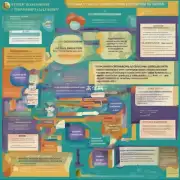课程如何确保课程内容的准确性和可靠性?
邱学明
之后的之后,我们都用让对方难过的方式证明自我正在被爱。
Answer:
1. Curriculum Development Committee:
- Establish a curriculum development committee composed of faculty, students, and experts in the field.
- The committee should be responsible for reviewing and revising the curriculum, ensuring alignment with program objectives and industry standards.
2. Faculty Input:
- Encourage faculty members to actively participate in the curriculum development process.
- Provide opportunities for feedback on proposed changes and ensure that the curriculum reflects current knowledge and best practices.
3. External Review:
- Seek external review of the curriculum by industry experts, accrediting agencies, or other institutions.
- External feedback can identify areas for improvement and ensure that the curriculum is relevant and effective.
4. Peer Review:
- Implement a peer review process where faculty members review each other's curriculum materials.
- Peer feedback can identify inconsistencies, gaps in knowledge, or areas for revision.
5. Accreditation and Certification:
- Ensure that the curriculum is accredited by recognized bodies and meets the standards set by those bodies.
- Accreditation and certification demonstrate the quality and reliability of the curriculum.
6. Ongoing Monitoring and Evaluation:
- Establish a system for ongoing monitoring and evaluation of the curriculum.
- Gather feedback from students, faculty, and industry partners to identify areas for improvement.
7. Technology and Resources:
- Utilize technology and resources to enhance the accuracy and reliability of the curriculum.
- This includes using reputable sources, validated assessments, and digital tools.
8. Revision and Updates:
- Regularly review and update the curriculum to reflect changes in the field, industry standards, and best practices.
- This ensures that the curriculum remains relevant and effective.





